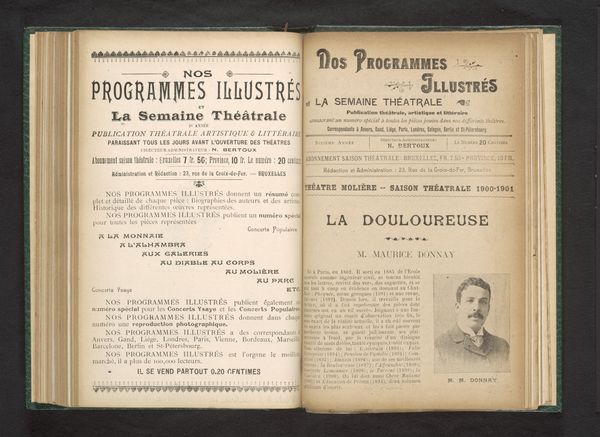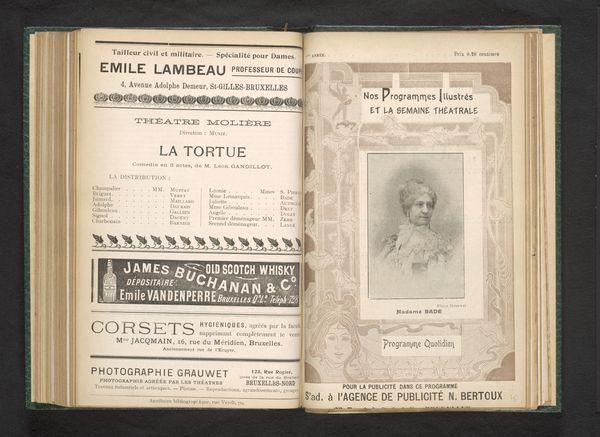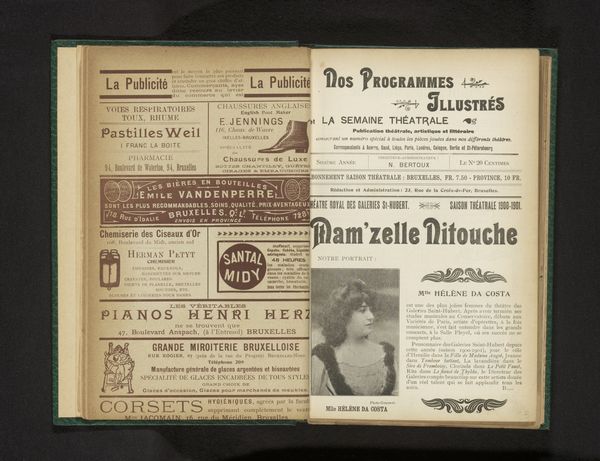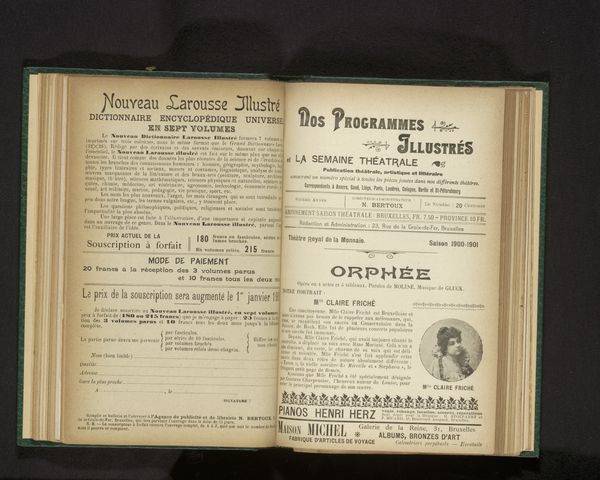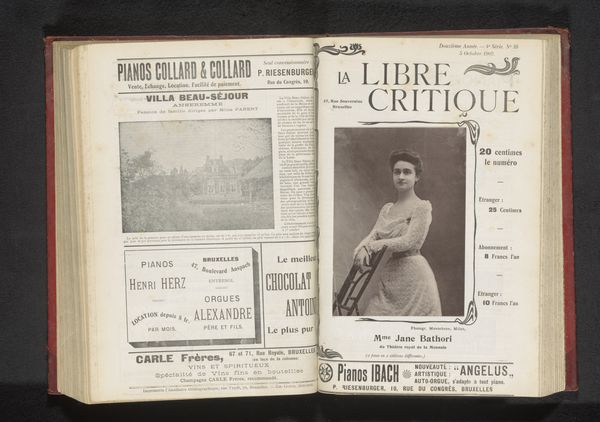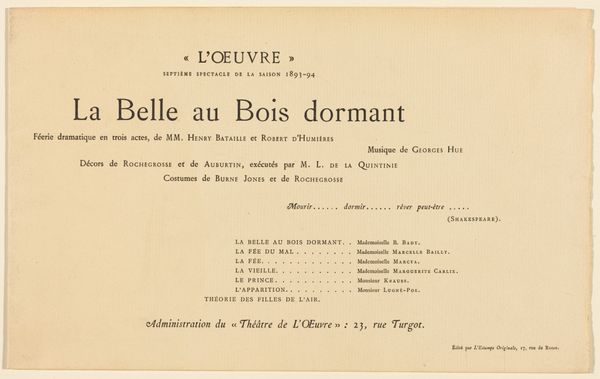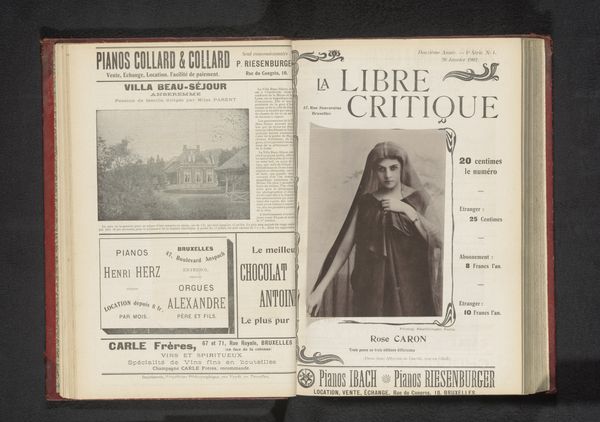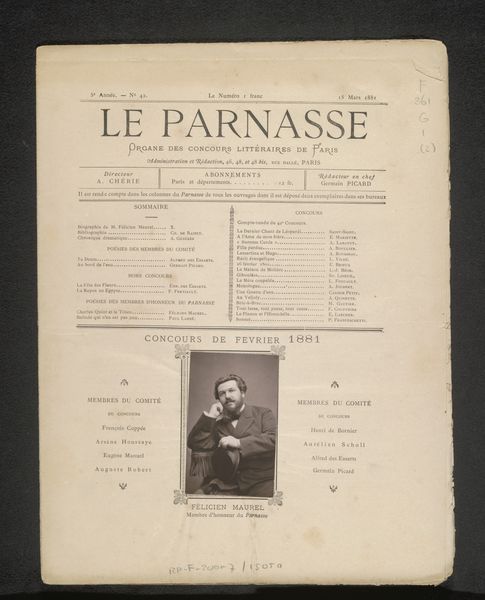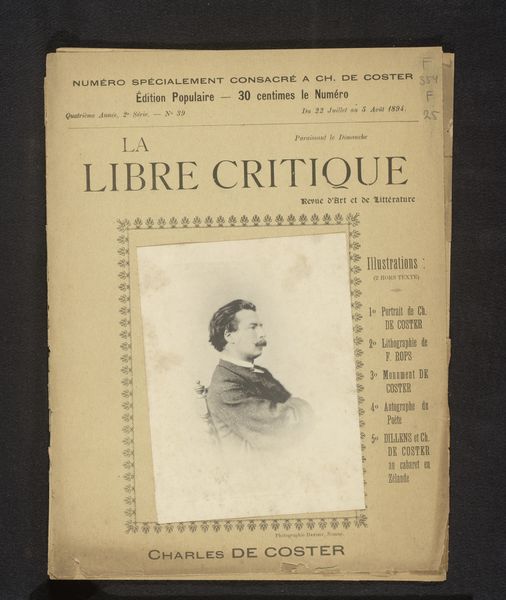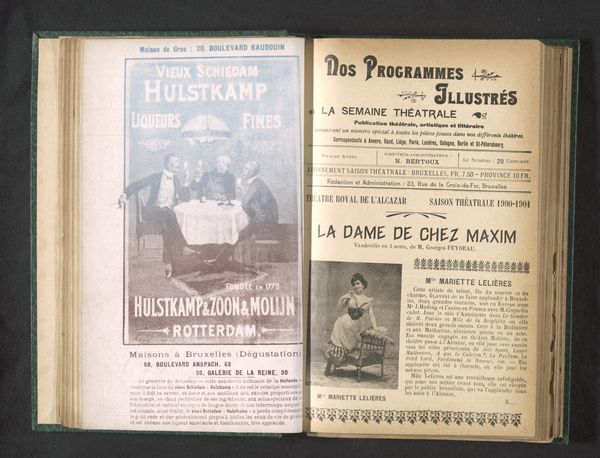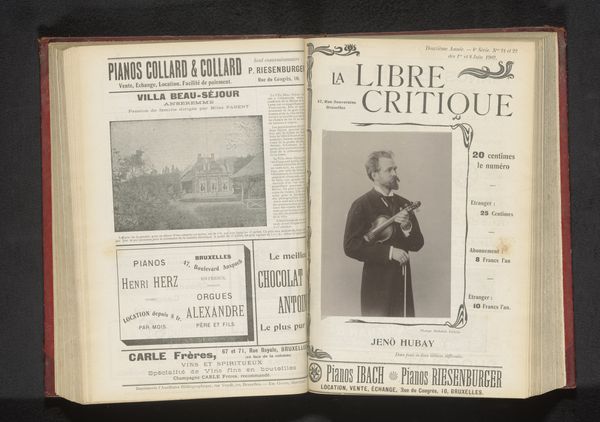
graphic-art, print, paper, typography
#
portrait
#
graphic-art
#
art-nouveau
# print
#
paper
#
typography
Dimensions: height 60 mm, width 50 mm
Copyright: Rijks Museum: Open Domain
Editor: This is a page from an old theatrical program from before 1900. It features a portrait of a man named Léon David and advertising for performances of *La Bohème* and *Mireille.* The typeface and art nouveau borders are lovely. What can you tell me about this from a historical perspective? Curator: Looking at this program as a historical document, it's fascinating to see how public roles for artists were constructed and marketed at the turn of the century. This isn't just a record of performances, it’s part of building Léon David's image. Notice how "M. LEON DAVID" is carefully typeset alongside an image of him in fashionable dress. How might this portrait have shaped public perception of him and his artistry? Editor: I hadn't thought about it as image construction. It’s more than just announcing a performance. Curator: Exactly. The Théâtre Royal de la Monnaie and the magazine clearly played a part in legitimizing and promoting cultural figures. Consider the role of the illustrated press at the time – publications like this disseminated visual and textual narratives that both reflected and shaped public opinion about art and artists. Editor: So it's not just about seeing a play; it's about participating in a larger cultural dialogue? Curator: Precisely. This single page captures a snapshot of the complex interplay between artistic production, marketing, and public reception in a specific historical moment. The typography and layout decisions – these were choices, conveying status and sophistication to audiences. How do you think audiences might have received it? Editor: I guess I just saw a program at first. But now I can imagine audiences connecting with art as part of everyday life, not separate. Curator: It really highlights how institutions and publications contribute to the creation of cultural narratives, doesn’t it? A valuable lesson, thinking about how we experience art today.
Comments
No comments
Be the first to comment and join the conversation on the ultimate creative platform.
